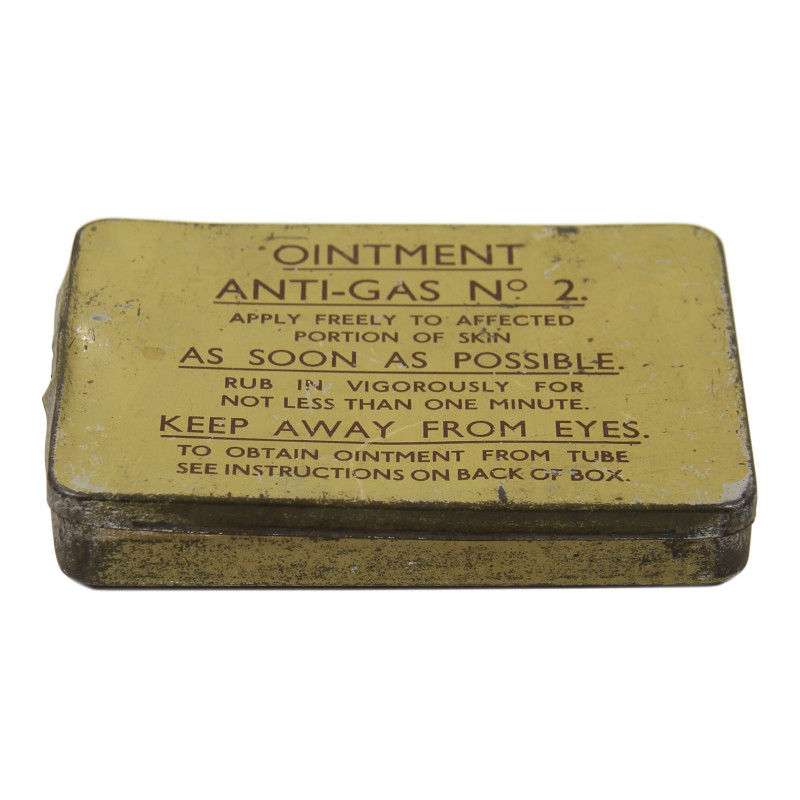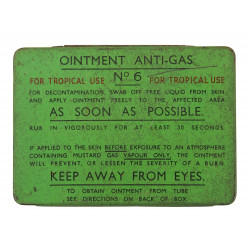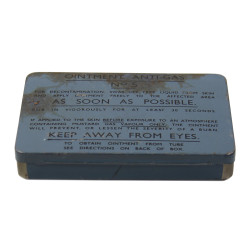






Genuine British complete N° 2 box containing its 8 tubes of anti-gas ointment. The tin gives general details of the contents and how to apply. These ointment tins were carried with every gas mask bag.
4 1/4 x 3 1/8 x 5/8 ins in size.
The tin is painted in buff with dark brown lettering. It seems to be the most common type of tin developed and its contents were formulated for use in temperate conditions like in ETO. The tubes held a high alkalin mixture of Chloramine-T and vanishing cream to neutralize the effects of a mustard gas attack.
You might also like

Genuine British complete N° 2 box containing its 8 tubes of anti-gas ointment. The tin gives general details of the contents and how to apply. These ointment tins were carried with every gas mask bag.
4 1/4 x 3 1/8 x 5/8 ins in size.
The tin is painted in buff with dark brown lettering. It seems to be the most common type of tin developed and its contents were formulated for use in temperate conditions like in ETO. The tubes held a high alkalin mixture of Chloramine-T and vanishing cream to neutralize the effects of a mustard gas attack.
The historical artifacts for sale at PARATROOPER’s are intended for collectors, history enthusiasts, historians and museum curators.
These items do not glorify or promote any of the political, ideological or racial opinions related to the global conflicts that bathed the 20th century in blood.
Besides, we remind you that Article R.645-1 of the French Penal Code establishes fines applicable to fifth class contraventions (except in the specific cases of a filming, show or exhibition which refer to historical events) for any individual who wears a uniform, insignia or symbol reminiscent of those worn by members of the various organizations declared criminal in application of Article 9 of the Charter of the International Military Tribunal annexed to the London Agreement of August 8, 1945 – SS, SD, Gestapo, Nazi leaders (the Führer, the Reichsleitung, the Gauleiters and their main collaborators, the Ortsgruppenleiter, the Zellenleiter and the Blockleiter), or reminiscent of those worn by any person found guilty, by a French or International Jurisdiction, of one or several crimes against humanity established by Articles 211-1 to 212-3 or mentioned in Law No. 64-1326 of December 26, 1964.
The Code provides additional penalties, including the confiscation of the items used or intended for committing the offence.



